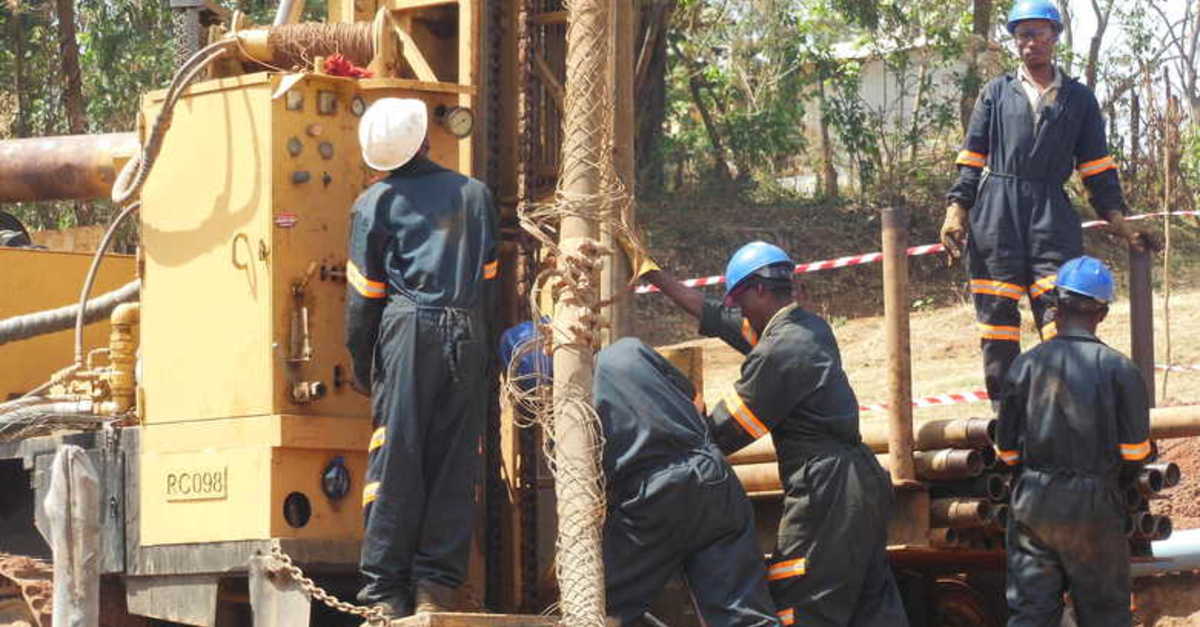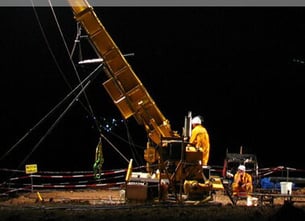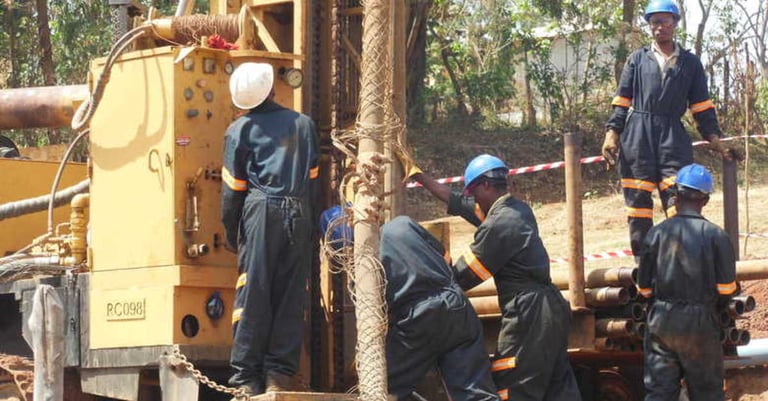KEFI Gold and Copper plc (LON:KEFI), the gold and copper exploration and development company with projects in the Federal Democratic Republic of Ethiopia and the Kingdom of Saudi Arabia, has provided an update on the Company’s 34%-owned and operated Hawiah Project in Saudi Arabia.
Highlights
· A Maiden Mineral Resource Estimate (“MRE”) was announced 19 August 2020 for the Volcanic Massive Sulphide deposit at Hawiah, of 19.2 million tonnes at 0.9% copper, 0.8% zinc, 0.6 g/t gold and 10.3g/t silver.
· The just-completed Phase 3 drilling programme has doubled the strike and plunge extension of the Camp Lode structure from the 2020 MRE area, with copper grades increasing down-plunge as anticipated by the geological model.
· The deepest massive sulphide intersection at the Camp Lode at a vertical depth of 590m extends the total plunging strike length of mineralisation to 1.2km from surface, with mineralisation remaining open.
· Drilling at the Crossroads Lode at Hawiah also confirms mineralisation remains open down-dip and down plunge with the current known limits of mineralisation at a vertical depth of only 380m.
· A total of 27 diamond drillholes covering 13,385m was completed in the Phase 3 drilling programme and 13,500m of diamond drilling is planned for the Phase 4 programme which has already been commenced.
· Baseline programmes for the Preliminary Feasibility Study (“PFS”) have commenced with a potential lodgement of a mining licence application targeted for mid-2022 and the start of development in 2023.
· An updated MRE is planned to coincide with the completion of the Phase 4 drilling.
Camp Lode Extension
The Phase 3 programme has successfully demonstrated the down-plunge continuation of the southward plunging Camp Lode ore body, with the deepest intersection representing a 670m extension from the 2020 MRE area. The increase in copper grade as predicted by the geological model is particularly encouraging.
Highlights from the Phase 3 diamond drilling program include the following drillhole results:
– HWD-074- 10.4m at 1.6% Cu, 1.4% Zn, 0.5g/t Au and 6.3 g/t Ag
– HWD-079 – 9.7m at 1.5% Cu, 1.3% Zn, 0.5 g/t Au and 8.3 g/t Ag
– HWD-082 – 10.0m at 1.8% Cu, 1.6% Zn, 0.5 g/t Au and 11.8 g/t Ag
– HWD-084 – 8.7m at 1.1% Cu, 1.6% Zn, 0.6 g/t Au and 10.1 g/t Ag
– HWD-086 – 9.3m at 1.8% Cu, 0.6% Zn, 0.4 g/t Au and 6.7 g/t Ag
– HWD-092 – 5.5m at 1.6% Cu, 0.53% Zn, 0.3 g/t Au and 6.9 g/t Ag
A full summary of the Phase 3 drill results of the Camp Lode and Crossroads Lode as well as detailed assay and collar information are contained in the appendix to this RNS which may be accessed at: http://www.rns-pdf.londonstockexchange.com/rns/2211V_1-2021-4-12.pdf
Crossroads Lode Extension
Drilling at the Crossroads Lode has extended the mineralisation 110m deeper than previously explored. This is within the thickest part of the lode which is now defined to a vertical depth of 380m and remains open at depth. Received assay results have returned results in line with the ‘up-dip’ drillholes in this area. The outstanding drilling results will be announced in due course.
Phase 4 drilling and PFS Development
The success of the early drilling phases has demonstrated that the tonnage and grade at Hawiah are robust enough to warrant moving the Project to the Preliminary Feasibility Study (“PFS”) stage.
The already commenced 13,500m ‘Phase 4’ diamond-drilling programme, coupled with a post-drilling MRE, is intended to upgrade strategic portions of the Hawiah deposit to allow for preliminary mine planning and design as required during a PFS. Drilling will also close the drill-spacing on the recently delineated down-plunge Camp Lode area to allow for Inferred Resource classifications in these zones.
Drilling will also target the high-grade copper ‘transition zone’ which lies between the oxide and fresh sulphide domains across the Hawiah deposit. This zone lies between depths of 20-50m, with previous drilling returning assay results of more than 5% copper. This zone has only been subject to limited testing and additional drilling will allow for greater understanding of grade distributions within this higher-grade copper zone, which would likely be targeted during the early stages of any mine development.
In preparation for the PFS, the first stages of the environmental monitoring programme and geohydrological studies have been initiated. These programmes will continue in tandem with the rest of the Project development to ensure a baseline is established and all regulatory requirements are met, with the intention being to complete the PFS by Q2 2022, ahead of a mining licence application. The opening round of metallurgical testwork is also progressing well, with initial findings in-line with expectations.
Additional Exploration Licences
The Project team recently welcomed visitors and inspectors from both the [define DMMR] (DMMR) and the local government to the Hawiah site for a successful site overview and Project development meeting.
After receiving positive reports, KEFI remains cautiously optimistic for the granting of additional Exploration Licenses in the up-coming months, as per the Kingdom’s Vision 2030 strategy. This includes the nearby Al Godeyer exploration licence application located 11km west of the Hawiah camp. Reconnaissance fieldwork by the geological team has confirmed mineralisation along 700m of strike length in this area, in a comparable style and characteristic to the main Hawiah gossans. Initial surface sampling has confirmed gold mineralisation within the gossans, with abundant copper showings also noted.
Harry Anagnostaras-Adams, Executive Chairman of KEFI, commented:
“The drilling results to date show that the Hawiah deposit remains open at depth and along strike. The recent work programme has sought to quickly ‘stretch’ some of the extremities of the deposit and as such we are greatly encouraged to see returns of significant intercepts as drilling continues to demonstrate the size and scale of the Hawiah deposit.
“I’m especially encouraged by the most southern hole extending the Camp Lode, which has intercepted massive sulphide with estimated true widths of more than 4 metres, which indicates strong potential for the deposit to continue further to the south.
“As previously reported, in addition to the deeper drilling being undertaken, targeting a substantial increase in the maiden Hawiah resource, the Phase 4 programme will also include infill drilling with a view to upgrading key areas of the resource to the indicated category so as to warrant mine planning and the estimation of an initial Ore Reserve.
“We have triggered a Preliminary Feasibility Study targeting a mining licence application in mid-2022 and potential start to development in 2023, together with further exploration of the surrounding area for a large stockwork zone or ‘feeder zone’ to the massive sulphides, which represents a separate and potentially even larger-scale target.
“We look forward to reporting further progress at Hawiah and outcomes of this major drilling programme in due course.”








































